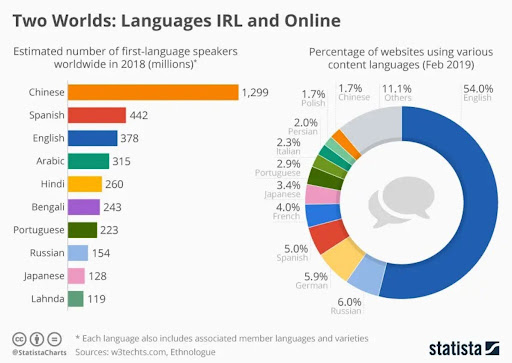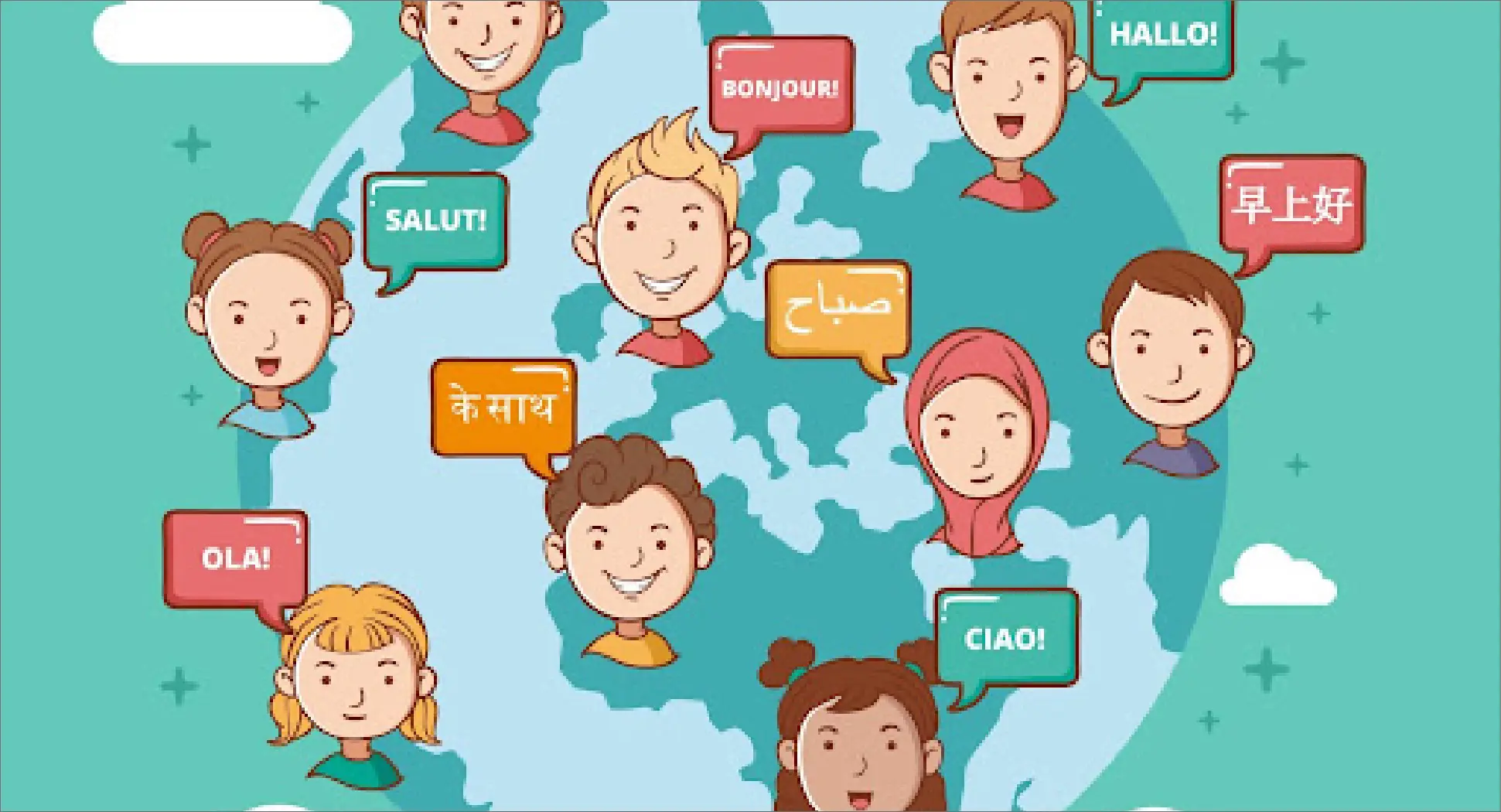In today’s interconnected world, businesses increasingly operate across borders and interact with diverse audiences. Effective communication across languages and cultures is crucial for success in this globalized environment.
Fortunately, technological advancements are vital in facilitating seamless multilingual business communication, breaking down barriers, and fostering collaboration.
Traditionally, businesses relied on human translators and interpreters to bridge the language gap. While these methods still hold value, technology offers several advantages in speed, efficiency, and accessibility.
Machine translation (MT), speech recognition, collaborative platforms, and artificial intelligence (AI) are key technologies revolutionizing multilingual business communication. Let’s discuss how each contributes to revolutionizing multilingual communication in business.
How Each Contributes to Revolutionizing Multilingual Communication in Business
1. Machine Translation
Once a clunky tool for basic translations, machine translation has evolved into a sophisticated bridge between languages.
Gone are the days of awkward sentence structures and lost meaning; today’s MT delivers nuanced and accurate results, capturing the subtle shades of language.
Multiple approaches power the revolution in MT. Statistical models analyze vast amounts of translated text, identifying patterns and predicting how words and phrases should be rendered in different languages.
Inspired by the human brain, neural networks go further, learning the underlying contexts and relationships between words, leading to even more natural and accurate translations.
Rule-based systems offer a structured approach, relying on linguistic rules to achieve consistency and accuracy, which is particularly valuable for technical or specialized domains.
Despite these advancements, MT is not a panacea.
Complex or heavily nuanced languages can still present challenges, and the human touch remains essential for tasks requiring cultural sensitivity or deep understanding. However, for everyday business needs, MT has become an invaluable tool.
From translating websites and marketing materials to bridging communication gaps in emails and documents, MT empowers businesses to connect with customers and partners across borders, fostering collaboration and driving global success.
2. Real-Time Translation

There is a wide gap between languages used in the real world and online. Language barriers leave English-speaking countries in the dark about foreign cultures, potentially hindering communication, information access, and more.
Speech recognition technology acts as a bridge, transforming spoken words into text. Real-time translation tools take it a step further, fostering seamless conversations across languages in real-time.
These tools are game-changers for meetings, conferences, and customer service interactions, eliminating communication barriers and building stronger relationships.
Imagine online literacy programs where teachers and learners speak in their own languages, yet everyone understands each other in real time. This is the power of real-time translation.
Leading solutions like Google Translate and Skype Translator are constantly evolving, offering accurate and natural-sounding translations in an instant. These tools empower businesses to collaborate effectively on international projects, engage customers in their native languages, and conduct business seamlessly across borders.
Real-time translation is not just a technological marvel; it’s a catalyst for global collaboration and understanding.
Collaborative Platforms and Translation Management Systems
Gone are the days of scattered documents and fragmented communication, the discordant notes that often lead to workplace failures. Collaborative platforms and translation management systems (TMS) have arrived, transforming translation into a harmonious symphony.
A study found that 86% blame poor collaboration and communication for workplace failures. But for teams that communicate well, they excel, with productivity up to 25%.
Terminology becomes a standardized chorus, ensuring everyone sings from the same music sheet.
Quality is guaranteed, not a solo act, with TMS taking the lead on workflow harmony.
Cost efficiency becomes the project’s rhythm, automatization eliminating the need for frantic chases after translators or version control struggles.
Even remote team collaboration among employees worldwide becomes seamless and more efficient.
This is the power of collaborative platforms and TMS. They bring the entire translation orchestra together under one roof—translators, editors, reviewers, project managers, and language teachers. With these platforms, there will be no more isolated instruments, just a unified ensemble working towards a shared goal: delivering high-quality translations that resonate with global audiences.
So, whether you’re translating a website, a marketing campaign, or a legal document, let collaborative platforms and TMS be your conductor. Together, they’ll orchestrate a translation project that’s not just efficient but a masterpiece.
AI and NLP
Artificial intelligence (AI) and natural language processing (NLP) are redefining the landscape of machine translation and language understanding. Think of translation models that adapt to your specific needs, capturing your target audience’s cultural nuances and intricacies. This is the future AI and NLP are building.
These technologies unlock a world of possibilities, paving the way for personalized translation solutions tailored to individual industries and audiences. Imagine legal documents translated with pinpoint accuracy, marketing materials that resonate with cultural sensitivities, and customer support interactions that go beyond language barriers.
AI’s potential doesn’t stop there. It holds the key to immersive communication experiences that transcend language barriers.
Expect witnessing virtual reality conferences where participants converse seamlessly in their own languages or a world where language learning becomes an interactive adventure. These are just glimpses of the future AI and NLP are shaping.
As these technologies continue to evolve, one thing is certain: the future of multilingual communication lies at the intersection of human ingenuity and the power of artificial intelligence.
Benefits of Technological Integration
Harnessing the power of technology in multilingual business communication unlocks a treasure trove of benefits.
Imagine teams and partners from diverse backgrounds collaborating seamlessly across languages without a hitch. This is the reality technology creates, fostering a culture of understanding and collaboration.
The benefits extend beyond internal teams. Businesses can now offer customers localized content and support, ensuring their needs are met in their native languages.
But efficiency is not forgotten. Technology automates translation tasks and centralizes management, saving businesses valuable time and resources. This allows businesses to focus on their core competencies.
Technology also unlocks the doors to global expansion. Businesses can now reach wider audiences and tap into previously inaccessible markets.
And perhaps most importantly, technology offers cost-effective solutions for translation and communication needs. Gone are the days of exorbitant translation fees.
Challenges and Considerations

While technology opens doors to a world of multilingual communication possibilities, it’s important to acknowledge the challenges that come knocking.
Machine translation, though powerful, can still stumble over complex language and subtle nuances. AI, for all its potential, carries the risk of bias, requiring careful consideration of ethical implications.
Even with technology’s aid, human expertise remains irreplaceable in sensitive communication tasks. Cultural understanding and nuance require the human touch, and technology should serve as a tool to enhance, not replace human interaction.
Security concerns also demand attention. Ensuring the safety and privacy of confidential information when using various technologies is vital. Integration can be a hurdle, requiring businesses to adapt existing workflows seamlessly to accommodate diverse technologies.
However, these challenges are not insurmountable. By recognizing and proactively addressing them, businesses can maximize the benefits of technology while minimizing potential risks.
With careful planning, thoughtful implementation, and a commitment to ethical practices, technological integration can empower businesses to navigate the multilingual landscape confidently and succeed.
The Future of Multilingual Communication
We can expect continued advancements in machine translation and AI technology. The demand for human translators with specialized skills and cultural awareness will also remain strong, as technology and human expertise must work together.
We also anticipate integrating multilingual communication tools into everyday business applications and the emergence of personalized and context-aware translation solutions.
Technology facilitates multilingual business communication, removes barriers, and fosters collaboration in a globalized world. Embracing and strategically using technology empowers businesses to unlock opportunities for growth and success in an increasingly interconnected marketplace.
However, it is crucial to balance technology and human expertise to ensure effective and culturally sensitive communication. As technology evolves, the future of multilingual business communication looks bright, with exciting possibilities for seamless and meaningful interactions across diverse languages and cultures.




